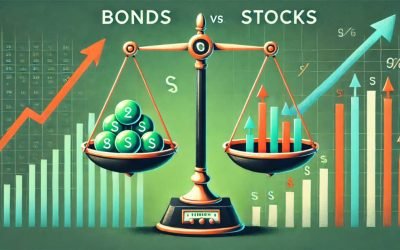Understanding Dividend Stocks: A Comprehensive Guide
Investing in dividend stocks has long been a popular strategy among investors seeking both income and growth. This article delves into the myriad benefits of dividend stocks, providing a thorough understanding of why they are a valuable addition to any investment portfolio. From the stability they offer to the potential for compounding returns, dividend stocks present numerous advantages that can help investors achieve their financial goals.
What Are Dividend Stocks?
Dividend stocks are shares of companies that regularly distribute a portion of their earnings to shareholders in the form of dividends. These payments are typically made on a quarterly basis, although some companies may pay dividends annually or semi-annually. Dividend stocks are often associated with established, financially stable companies that have a history of consistent earnings and a commitment to returning value to shareholders.
Top Benefits of Investing in Dividend Stocks
1. Regular Income Stream
One of the most compelling reasons to invest in dividend stocks is the regular income stream they provide. Unlike growth stocks, which may not pay dividends and rely on capital appreciation for returns, dividend stocks offer a tangible return on investment through periodic dividend payments.
- Predictable Cash Flow: Dividend payments provide a predictable source of income, which can be particularly beneficial for retirees or those seeking a steady cash flow.
- Reinvestment Opportunities: Investors can choose to reinvest dividends through dividend reinvestment plans (DRIPs), allowing them to purchase additional shares and potentially increase their overall returns.
2. Potential for Capital Appreciation
In addition to providing regular income, dividend stocks also offer the potential for capital appreciation. Companies that pay dividends are often financially stable and have a track record of growth, which can lead to an increase in the stock’s value over time.
- Long-Term Growth: Dividend-paying companies are typically well-established and have a history of steady growth, making them attractive for long-term investors.
- Market Resilience: Dividend stocks tend to be less volatile than non-dividend-paying stocks, providing a measure of stability during market downturns.
3. Compounding Returns
One of the most powerful benefits of dividend stocks is the potential for compounding returns. By reinvesting dividends, investors can purchase additional shares, which in turn generate more dividends, creating a snowball effect that can significantly enhance overall returns over time.
- Exponential Growth: The reinvestment of dividends can lead to exponential growth in the value of an investment portfolio.
- Time Advantage: The longer the investment horizon, the greater the potential for compounding returns to work their magic.
4. Tax Advantages
In many jurisdictions, dividends may be taxed at a lower rate than other forms of income, such as interest or wages. This can make dividend stocks a tax-efficient way to generate income.
- Lower Tax Rates: Qualified dividends may be taxed at a lower rate than ordinary income, providing a tax advantage for investors.
- Tax-Deferred Growth: Reinvested dividends can grow tax-deferred in certain types of accounts, such as Individual Savings Accounts (ISAs) or Self-Invested Personal Pensions (SIPPs).
5. Inflation Hedge
Dividend stocks can serve as a hedge against inflation. As companies grow and increase their earnings, they may also increase their dividend payments, helping investors maintain their purchasing power over time.
- Rising Dividends: Companies with a history of increasing dividends can help investors keep pace with inflation.
- Real Returns: Dividend payments provide real returns that can help offset the eroding effects of inflation on purchasing power.
6. Portfolio Diversification
Including dividend stocks in an investment portfolio can enhance diversification and reduce overall risk. Dividend stocks often belong to different sectors and industries, providing exposure to a broad range of economic activities.
- Sector Exposure: Dividend stocks can provide exposure to various sectors, such as utilities, consumer goods, and healthcare, which may perform differently under various economic conditions.
- Risk Mitigation: Diversifying with dividend stocks can help mitigate the risk of a concentrated portfolio and provide a more balanced investment approach.
How to Choose the Right Dividend Stocks
1. Dividend Yield
The dividend yield is a key metric to consider when selecting dividend stocks. It represents the annual dividend payment as a percentage of the stock’s current price. A higher yield may indicate a more attractive income stream, but it’s important to assess the sustainability of the dividend.
- High Yield vs. Sustainability: While a high dividend yield can be appealing, it’s crucial to ensure that the company can maintain its dividend payments over the long term.
- Comparative Analysis: Compare the dividend yield of a stock with its industry peers to gauge its relative attractiveness.
2. Dividend Payout Ratio
The dividend payout ratio measures the proportion of earnings a company pays out as dividends. A lower payout ratio may indicate that the company has room to increase dividends in the future, while a higher ratio could signal potential sustainability issues.
- Healthy Payout Ratio: Look for companies with a payout ratio that balances rewarding shareholders and retaining earnings for growth.
- Red Flags: Be cautious of companies with excessively high payout ratios, as they may struggle to maintain dividend payments during economic downturns.
3. Dividend Growth History
A company’s history of dividend growth can provide insights into its financial health and commitment to returning value to shareholders. Companies with a track record of consistently increasing dividends are often more reliable and financially stable.
- Consistent Growth: Look for companies with a history of steady dividend increases, as this can indicate strong financial performance and management confidence.
- Future Potential: Assess the company’s potential for future dividend growth based on its earnings prospects and industry trends.
4. Financial Health
Evaluating a company’s financial health is crucial when selecting dividend stocks. Strong financial metrics, such as revenue growth, profitability, and manageable debt levels, can indicate a company’s ability to sustain and grow its dividend payments.
- Revenue and Earnings Growth: Companies with consistent revenue and earnings growth are more likely to maintain and increase their dividends.
- Debt Levels: Assess the company’s debt levels to ensure they are manageable and do not pose a risk to dividend sustainability.
5. Industry and Economic Factors
Consider the industry and economic factors that may impact a company’s ability to pay dividends. Some industries, such as utilities and consumer staples, are known for their stable dividend payments, while others may be more cyclical and subject to economic fluctuations.
- Industry Stability: Focus on industries with a history of stable dividend payments and less susceptibility to economic downturns.
- Economic Trends: Stay informed about economic trends and how they may affect the industries in which your dividend stocks operate.
Common Risks Associated with Dividend Stocks
1. Dividend Cuts
One of the primary risks of investing in dividend stocks is the potential for dividend cuts. Companies may reduce or eliminate dividend payments due to financial difficulties, economic downturns, or changes in business strategy.
- Financial Instability: Companies facing financial challenges may be forced to cut dividends to conserve cash.
- Economic Downturns: Economic recessions can lead to reduced earnings and dividend cuts for many companies.
2. Interest Rate Risk
Dividend stocks can be sensitive to changes in interest rates. When interest rates rise, fixed-income investments such as bonds become more attractive, potentially leading to a decline in demand for dividend stocks.
- Competitive Yield: Rising interest rates can make bonds and other fixed-income investments more competitive with dividend stocks.
- Valuation Impact: Higher interest rates can lead to lower stock valuations, affecting the price of dividend stocks.
3. Market Volatility
While dividend stocks are generally less volatile than non-dividend-paying stocks, they are not immune to market fluctuations. Economic events, geopolitical tensions, and changes in investor sentiment can all impact the value of dividend stocks.
- Economic Events: Economic data releases, policy changes, and other events can lead to market volatility and affect dividend stock prices.
- Geopolitical Tensions: Political instability and geopolitical tensions can create uncertainty and impact investor confidence.
4. Company-Specific Risks
Investing in individual dividend stocks exposes investors to company-specific risks, such as management decisions, competitive pressures, and operational challenges. These factors can impact a company’s ability to pay and grow dividends.
- Management Decisions: Poor management decisions can negatively affect a company’s financial performance and dividend payments.
- Competitive Pressures: Increased competition can impact a company’s market share and profitability, affecting its ability to pay dividends.
Strategies for Mitigating Risks
1. Diversification
Diversifying your investment portfolio by including a mix of dividend stocks from different sectors and industries can help mitigate risks. This approach reduces the impact of any single company’s performance on your overall portfolio.
- Sector Diversification: Invest in dividend stocks across various sectors to spread risk and reduce exposure to sector-specific challenges.
- Geographic Diversification: Consider including international dividend stocks to diversify across different economies and markets.
2. Focus on Quality
Investing in high-quality companies with strong financials, a history of dividend growth, and a sustainable payout ratio can help reduce the risk of dividend cuts and enhance long-term returns.
- Financial Strength: Prioritise companies with strong balance sheets, consistent earnings growth, and manageable debt levels.
- Dividend Track Record: Look for companies with a proven track record of maintaining and increasing dividend payments.
3. Regular Monitoring
Regularly monitoring your dividend stock investments can help you stay informed about any changes in the company’s financial health, industry conditions, or economic trends that may impact dividend payments.
- Earnings Reports: Keep an eye on quarterly earnings reports and other financial disclosures to assess the company’s performance.
- Industry News: Stay updated on industry news and trends that may affect the companies in your portfolio.
4. Reinvestment Strategies
Utilising dividend reinvestment plans (DRIPs) can help enhance returns by automatically reinvesting dividends to purchase additional shares. This strategy can also reduce the impact of market volatility by averaging the purchase price over time.
- Automatic Reinvestment: DRIPs allow for automatic reinvestment of dividends, helping to compound returns over time.
- Cost Averaging: Reinvesting dividends regularly can help average out the purchase price and reduce the impact of market fluctuations.
Conclusion
Dividend stocks offer a range of benefits for investors, from providing a regular income stream and potential for capital appreciation to offering tax advantages and serving as a hedge against inflation. By carefully selecting high-quality dividend stocks and employing strategies to mitigate risks, investors can build a diversified portfolio that supports their financial goals and enhances long-term returns.
While dividend stocks are not without risks, the potential rewards make them a valuable addition to any investment strategy. By focusing on companies with strong financials, a history of dividend growth, and a sustainable payout ratio, investors can enjoy the benefits of dividend investing while minimising potential downsides.

Q&A Section
| Question | Answer |
|---|---|
| What are dividend stocks? | Dividend stocks are shares of companies that regularly distribute a portion of their earnings to shareholders in the form of dividends. |
| What is the main benefit of investing in dividend stocks? | The main benefit is the regular income stream they provide through periodic dividend payments. |
| How can dividend stocks help with portfolio diversification? | Dividend stocks can enhance diversification by providing exposure to different sectors and industries, reducing overall portfolio risk. |
| What is a dividend payout ratio? | The dividend payout ratio measures the proportion of earnings a company pays out as dividends. |
| How can investors mitigate risks associated with dividend stocks? | Investors can mitigate risks by diversifying their portfolio, focusing on high-quality companies, regularly monitoring investments, and utilising dividend reinvestment plans (DRIPs). |
Dividend stocks offer several key benefits for investors, making them a popular choice for building a stable portfolio. Some of the primary advantages include:
- Regular Income: Dividend-paying stocks provide a reliable income stream, as companies often distribute a portion of their profits to shareholders regularly. This can be particularly beneficial for retirees or those seeking passive income(Investopedia)(Kiplinger.com).
- Lower Volatility: Dividend stocks tend to be less volatile than growth stocks. Companies that pay consistent dividends are often seen as more financially stable, which helps cushion the stock price against market fluctuations(Kiplinger.com).
- Potential for Long-Term Growth: Many dividend-paying companies, especially “Dividend Aristocrats,” increase their dividends annually. This provides both an increasing income stream and potential stock price appreciation over time(DividendStocks.com).
- Total Return Boost: Dividends contribute significantly to the total return on investment. Historically, a large portion of stock market gains has come from reinvested dividends(Investopedia).
- Tax Advantages: Qualified dividends are taxed at lower rates compared to ordinary income, making dividend-paying stocks more tax-efficient for long-term investors(Investopedia).
However, it is important to watch out for high-yield traps, where companies may offer unsustainable dividends, and to ensure you’re investing in solid companies with a long history of consistent payouts(
For more detailed insights, check out resources like Investopedia, Kiplinger, and Fidelity for expert advice on dividend investing strategies.















 How to trade CFD? (00:49)
How to trade CFD? (00:49) How to trade binary options*? (01:22)
How to trade binary options*? (01:22) Forex. How to start? (01:01)
Forex. How to start? (01:01)